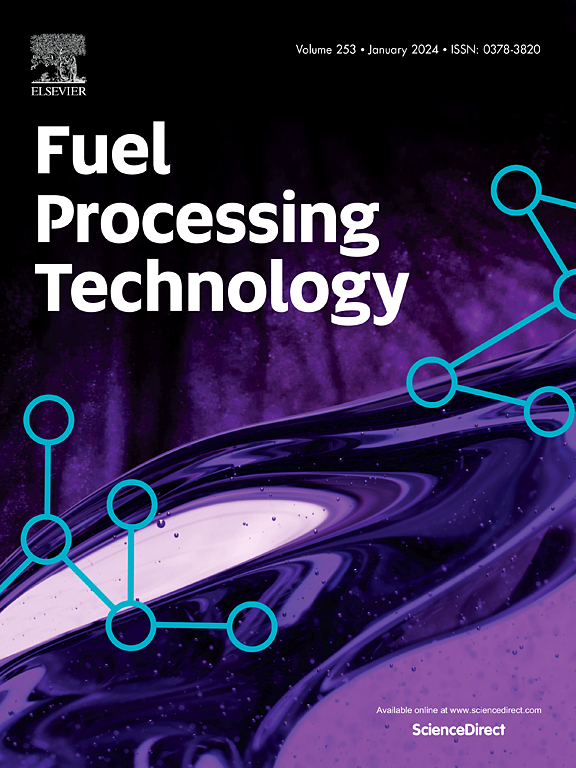用氨作还原剂直接还原钒钛球团:热力学、特性和动力学分析
IF 7.2
2区 工程技术
Q1 CHEMISTRY, APPLIED
引用次数: 0
摘要
采用氢(H2)作为还原剂可以降低钒钛矿的还原难度。而用氨(NH3)代替H2作为还原剂可以解决H2储存和运输困难的问题。在875 ~ 950℃的温度范围内,利用高热重仪研究了NH3还原钒钛球团矿(V1)的反应特性和等温动力学。对NH3和H2还原V1矿石的反应进行了热力学分析。热力学结果表明,与H2相比,NH3还原V1矿石的反应更自发,表明了NH3作为还原剂的优越性。在950℃、NH3浓度为60%、还原时间为180 min的条件下,金属化率为95.59%。还原过程中一氧化氮(NO)的最高浓度可达198 ppm,且随着反应的进行,NO会逐渐减少。模型拟合法和无模型法得到的60% NH3还原V1矿石的表观活化能分别为151.43 kJ/mol和150.44 kJ/mol。本研究为深入了解铵还原钒钛球团工艺提供了理论支持。本文章由计算机程序翻译,如有差异,请以英文原文为准。

Direct reduction of vanadium titanium pellets using ammonia as a reductant: Thermodynamics, characteristics, and kinetics analysis
Applying hydrogen (H2) as a reductant can decrease the difficulty of reducing vanadium titanium ores. However, using ammonia (NH3) instead of H2 as a reductant can solve the problem of difficult storage and transportation of H2. Here, we investigated the reaction characteristics and isothermal kinetics of the vanadium titanium pellets (V1) ores reduced by NH3 using high-thermogravimetric equipment at temperatures ranging from 875 °C to 950 °C. A thermodynamic analysis was conducted on the reaction of NH3 and H2 reducing V1 ores. The thermodynamic results indicated that the reaction of NH3 reducing V1 ores is more spontaneous compared to H2, demonstrating the superiority of NH3 as a reductant. A metallization rate of 95.59 % at a temperature of 950 °C, an NH3 concentration of 60 %, and a reduction time of 180 min. The highest concentration of nitric oxide (NO) during the reduction process can reach 198 ppm, and NO will gradually decrease as the reaction progresses. The apparent activation energies for the reduction of V1 ores by 60 % NH3 obtained by the model-fitting method and model-free method were 151.43 kJ/mol and 150.44 kJ/mol, respectively. This study provides theoretical support for deeper understanding of the process of NH3-reducing vanadium titanium pellets.
求助全文
通过发布文献求助,成功后即可免费获取论文全文。
去求助
来源期刊

Fuel Processing Technology
工程技术-工程:化工
CiteScore
13.20
自引率
9.30%
发文量
398
审稿时长
26 days
期刊介绍:
Fuel Processing Technology (FPT) deals with the scientific and technological aspects of converting fossil and renewable resources to clean fuels, value-added chemicals, fuel-related advanced carbon materials and by-products. In addition to the traditional non-nuclear fossil fuels, biomass and wastes, papers on the integration of renewables such as solar and wind energy and energy storage into the fuel processing processes, as well as papers on the production and conversion of non-carbon-containing fuels such as hydrogen and ammonia, are also welcome. While chemical conversion is emphasized, papers on advanced physical conversion processes are also considered for publication in FPT. Papers on the fundamental aspects of fuel structure and properties will also be considered.
 求助内容:
求助内容: 应助结果提醒方式:
应助结果提醒方式:


